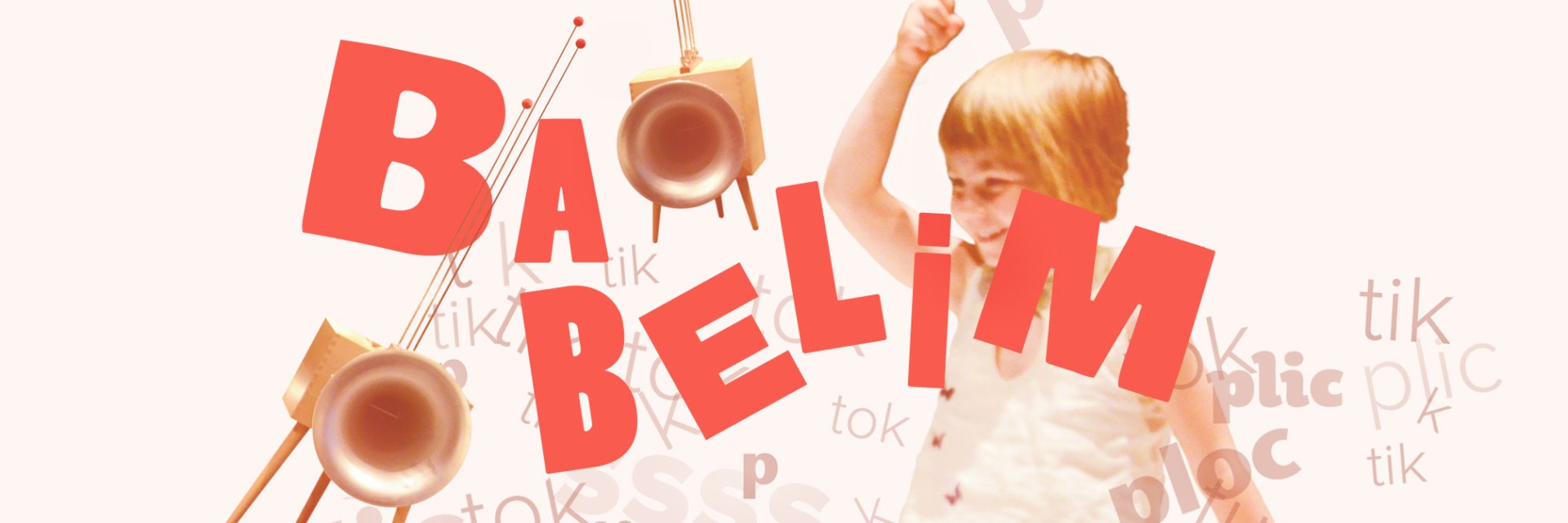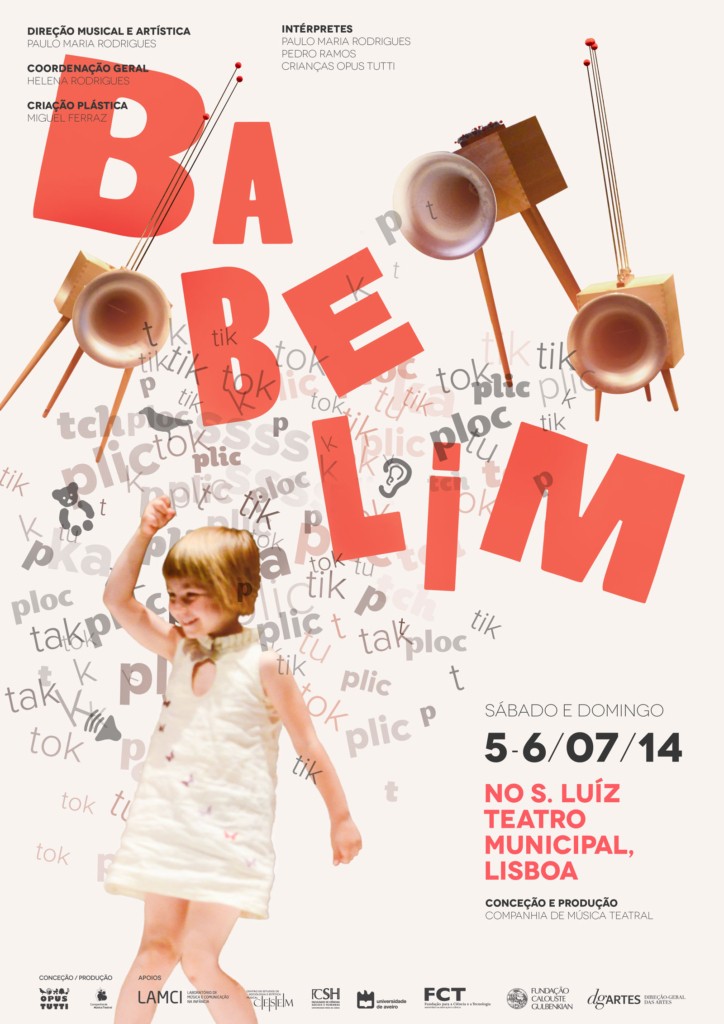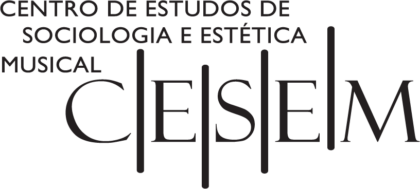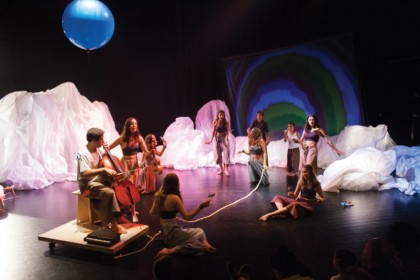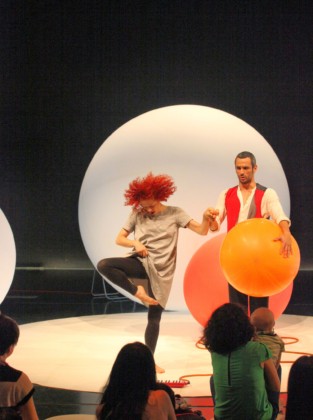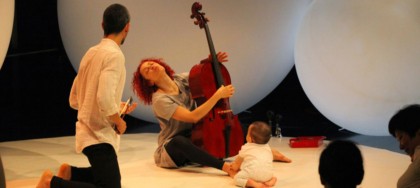Babelim is a performance involving music (piano, voices and a diverse set of sound producing objects) and movement, where the public plays a participative role engaging with a set of musical themes which are easy to learn and a collection of visual signs and graphical scores which are easily interpreted.
Babelim is an invented term to denote the way we would communicate before there was language. It is made of sounds, images, movements, spoken/sung/danced through the stones, plants, animals and humans. It was lost in time and in the rush to grow up. But the babies and their mothers, they still speak it.
Babelim is an open work that combines contemplative scenes with participatory moments. It is born out of work exploring, experiencing and researching with parents and babies, teachers and artists, that over the course of four years have shared in the different stages of the Opus Tutti project. In particular, this builds on the workshops Afinação do Ouvir (Tuning of Listening) e Afinação do Brincar (Tuning of Playing). This is a place of freedom, sharing and authenticity, where paths cross, a way to celebrate “the here and now” through music, voice and the body.
Babelim is a language. It is also a place. A landscape, a collection of sonorous and visual pictures, sometimes painting highly abstract concepts, sometimes interchanging with complex soundscapes, and sometimes very simple ones. The piano is the central focus of Babelim, conversing with the invented instruments (Makers of Everyday Soundscapes) and voices (of the artists and the public, guided by a graphical language projected overhead, and by a set of signs that contribute to the theatrics of the piece).
Babelim is particular in that it involves a group of children in the artistic team, as over the course of the Opus Tutti Project we developed the idea that caring for the littlest ones is something that is learnt early on, and because we understand that babies and small children relate to older children in an especially beautiful way. All these elements – musical, choreographic, theatrical – are starting points for communication to flow between babies, children, adults, artists and public.
Babelim can be seen and heard in many ways. It is an enveloping lap, magma of sounds and movements, a humming community. It provides a view of an art which is inspired by affection, an artistic experience which represents the results of various paths that were taken by different people to be followed once more each time it is performed. It is a participative and fluid experience where each member of the audience is invited to be absorved by the harmony of the moment.
